Jim Crow Laws
After the U.S. Supreme Court overturned the Civil Rights Act of 1875, laws were passed that separated blacks from whites.
These were known as “Jim Crow” laws. Supposedly the laws were named after a dance tune, “Jump Jim Crow” that ridiculed African Americans. Signs went up in front of water fountains, restrooms, and other public places saying “Whites Only.”
White politicians, who voted for separation, justified their actions by saying the separate accommodations, like schools, were equal to what whites had. This policy was called “separate, but equal.”
It was obviously not equal, but in 1896, the U.S. Supreme Court ruled in Plessy vs. Ferguson that separate but equal facilities did not violate the U.S. Constitution.
To learn more about Plessy v. Ferguson, click here.
Tennessee railroad companies segregated rail cars. Cities segregated street cars. The Plessy decision was used to justify segregation in all areas of public life—restrooms, water fountains, restaurants, and later movie theaters.
Segregation also took place in the North and in the federal government. Woodrow Wilson had run for president in 1912 promising “they (African Americans) may count on me for absolute fair dealing.” When he took office, his actions didn’t fulfill his promise. Instead he fired 15 of the 17 black supervisors in the government, and replaced them with whites.
Mary Church Terrell, a federal employee and native of Memphis, fought back. She threatened to expose that employee restrooms had been segregated. Under her pressure, government officials canceled the order. Church later led boycotts of segregated restaurants in Washington D.C.
To read more about Mary Church Terrell, click here.
Schools had been segregated since before the Civil War. (Before the war, there only a few schools in Tennessee for black children.) Tennessee law required that black children attend separate schools from whites. These schools were supposed to be equal to what white children had. “No one even pretends that the latter part of this requirement is observed,” according to Gertrude Folks, a child welfare advocate of that time.
If not for efforts of northern foundations, educators, and black parents, schools for African Americans would have been almost non-existent. The Julius Rosenwald Fund, with aid from members of the African American communities, paid for improvements to old buildings and constructed 350 new black schools in the state.
Picture Credits:
- A photograph of the Hotel Clark in Memphis which proclaims itself "for colored only." The photograph was taken by Marion Post Wolcott in 1939. Library of Congress
- Photograph showing the Colored Ward at the Mountain Branch Home for Disabled Volunteer Soldiers. This photo was taken in 1921 in Johnson City, Tennessee. It shows a group of African American veterans posed outside of their hospital ward. Two white men are also shown standing on the left. Museum at Mountain Home, East Tennessee State University.
- Photograph showing the Colored Old Folks Home. This photo was taken sometime between 1920 and 1939 in Memphis. It shows four African Americans seated on a porch. Memphis Public Library and Information Center.
- Photograph of Mary Church Terrell. This photo was taken sometime between 1890 and 1900. Library of Congress.
- The photograph on top is the Bemis School. The photo shows students and teachers posing outside of the Bemis school. It was taken in 1910 in Bemis, Tennessee. Union University. The photograph on the bottom is the Bemis Negro School. It shows students walking outside of the school. It was taken in Bemis, Tennessee sometime between 1900 and 1950. Union University.
- Photograph entitled, “Crowded streetcar on Montgomery Avenue .” This photograph was taken sometime between 1904 and 1910 in Chattanooga. It shows men running toward a crowded streetcar. Many of the men are African American. Chattanooga-Hamilton County Bicentennial Library.
- Photograph of two young girls. The two girls, one black and one white, are shown sitting together on a porch. The girls are similarly dressed in stockings, shoes and dresses, however the condition of their clothes are strikingly different. Tennessee State Library and Archives.
Confronting the Modern Era >> Racial Segregation >> Jim Crow Laws >>
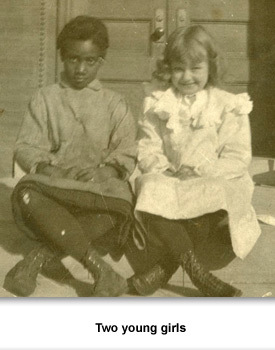
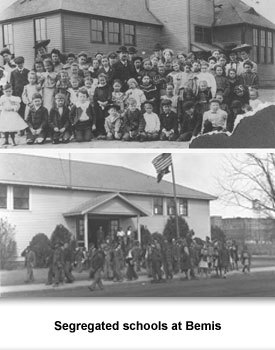
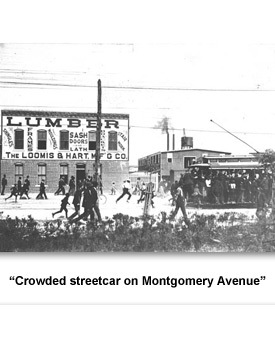
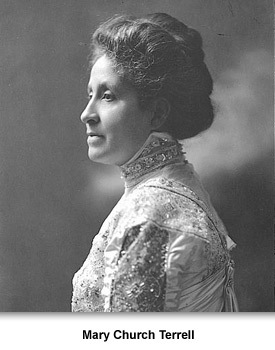
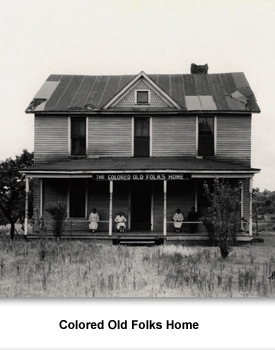
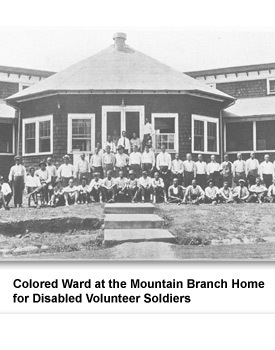
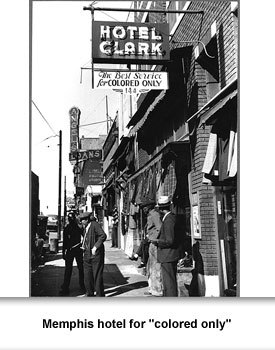
 Sponsored by: National Endowment for the Humanities
Sponsored by: National Endowment for the Humanities